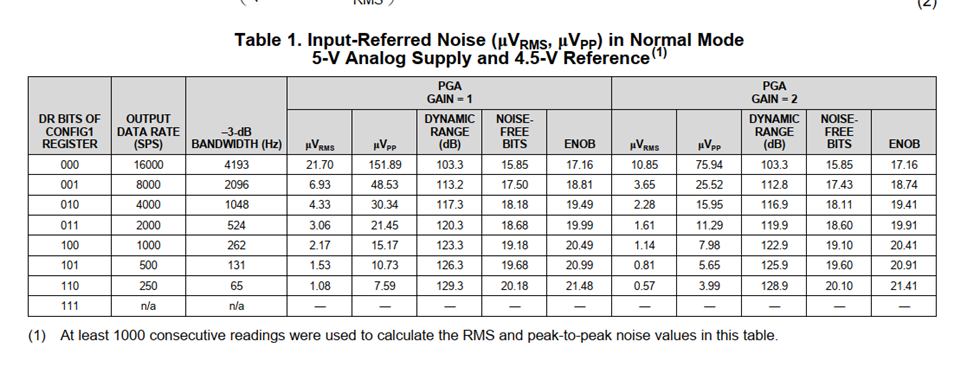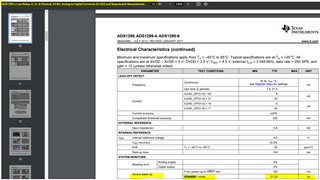hi TI,
Does the ads1299 single shot mode noise follow the normal mode result in the attached picture?

This thread has been locked.
If you have a related question, please click the "Ask a related question" button in the top right corner. The newly created question will be automatically linked to this question.
hi TI,
Does the ads1299 single shot mode noise follow the normal mode result in the attached picture?

The noises tables were obtained with the following conditions -
"summarize the ADS1299-x noise performance with a 5-V analog power supply. The data are representative of typical noise performance at TA = +25°C. The data shown are the result of averaging the readings from multiple devices and are measured with the inputs shorted together. A minimum of 1000 consecutive readings are used to calculate the RMS and peak-to-peak noise for each reading."
It was acquired in Continuous Mode.
Thanks.
hi ChienChun,
Question 1,
Whether the noise parameters of single shot mode and continuous mode are the same?
Question 2,
The PWDN mode of the ad1299 is used to reduce power consumption. The customer finds that the vcap1 voltage does not remain after entering the PWDN mode. After waking up, it takes 5 s VCAP to stabilize. The time is too long, which is not suitable for the customer's demand for sampling 1s and disconnecting 1s. Do you have a solution?
Question 3,
Vcap1 refers to datasheet and connects with 100 UF Tan capacitor. Can this capacitance be reduced? What is the recommended value if it is reduced?
Hi,
1. TI does/can not disclose further info for this. However, customers are welcome to use EVM to evaluate.
2. /#PWDN is not for reduce power consumption -


ADS1299 datasheet does show low-power standby mode -



3.Datasheet/user guide do not suggest to change Vcap as Vcap could affect some rising and/or falling time in the timing diagram/constraint and/or performance.
If customer needs to change something not recommended in the datasheet or EVM user guide, it's good practice to change in at least 2~3 EVMs(or prototype PCBAs) and do thoroughly A/B testing -
Designers/engineers will need to test, collect data, study, analyze, verify and validate and tune, reiterate/revise before making final decisions.